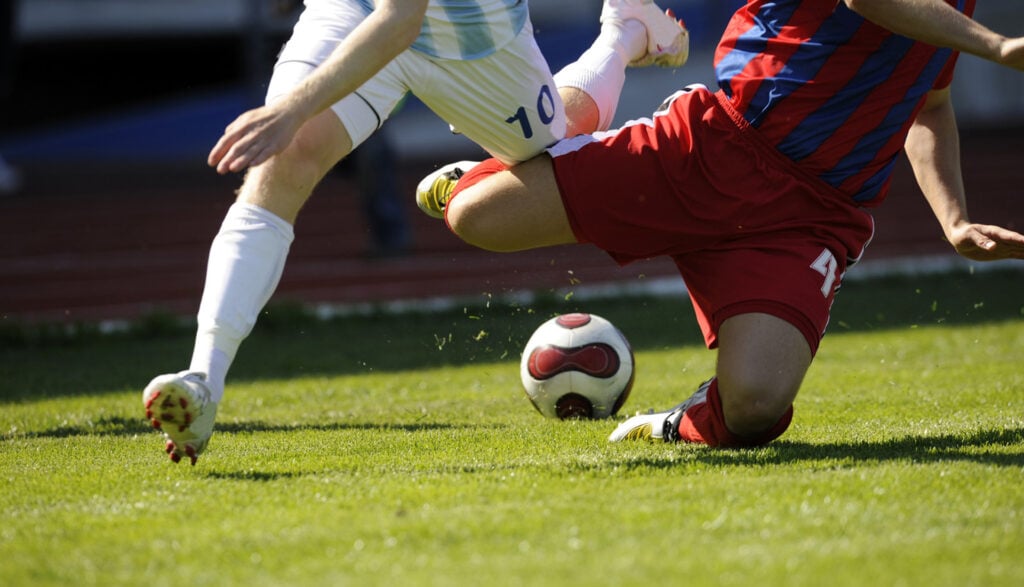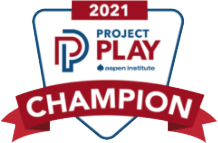The Psychology Of Injury: Recovery is in the Mind, Not Just the Body
Posted by: Mason Blake | University of Denver Center for Performance Excellence (CPEX)
Due to the strenuous demands placed on soccer players, physical injury represents an inexorable consequence of training and competition. Although sport injury rehabilitation is typically perceived as an exclusively physical event, in reality, it is a much more complex phenomenon. Many of us are aware of the physical consequences of injury, however, the lack of awareness and stigma surrounding psychology means the mental scars that can accompany physical damage are largely being disregarded, neglected or poorly treated. There are many examples in which physical measures of an injured area indicate a full recovery of strength, stability, and flexibility, only for the player to experience an inability to return to pre-injury levels of performance. Research conducted within the field of sport and performance psychology has evidenced the lack of mental rehabilitation as a major antecedent of this all too common experience. Coaches, parents and even the players themselves have a responsibility to be aware of the psychological ramifications of injury and appropriate treatments to tackle the mental and emotional needs of injured players. So when undertaking this responsibility, what mental aspects should we be addressing?
Athletic Identity
For developing players, being a ‘soccer player’ adds great meaning and value to life, with this athletic identity satisfied by their regular participation in the sport they so deeply love. For those deeply connected with this identity, the swift, unpredictable occurrence of injury can be extremely problematic. Indeed during this period away from the game, their need to enact the role of being a soccer player cannot be satisfied, leading to an inability to obtain meaning from life. Instead, players will begin to ponder the question, “If I am not a soccer player, who am I?” an exercise of self-exploration that can induce feelings of inadequacy, depression, and anxiety. Therefore, in order to avoid this psychological distress, the exploration and satisfaction of athletic identity must represent a core feature of injury rehabilitation.
Adherence to Rehabilitation
Initiating and persevering through the potential long injury rehabilitation process presents perhaps the biggest challenge for injured soccer players. Indeed the rehabilitation period is pervaded with psychological challenges, such as the prospect of physical pain, boredom, frustration, setbacks, and uncertainty. The presence of such factors can diminish an individual’s desire to attend physical therapy sessions, exert effort during these sessions or even engage in rehabilitative exercises at all. This lack of motivation can foster under-adherence, the ultimate inhibitor of physical recovery. It is important to note that excessive motivation also presents an issue for physical recovery. Specifically, players who are extremely motivated to return to soccer promptly can over-exert themselves in physical therapy and hold false perceptions in regards to their readiness to return.
Lack of Confidence
Confidence can be thought of as a muscle in itself. Just as physical muscles are compromised during injury, the confidence muscle is also weakened. When confidence is low, negative thinking, anxiety, focus, and under-adherence to rehabilitation are exacerbated. Furthermore, confidence is a multidimensional concept that does not refer to the belief in one’s ability to recover from injury in isolation. Instead, confidence is inclusive of one’s belief in the efficacy of the prescribed rehabilitation program, personal adherence to the program, physical recovery, and ability to return to soccer and retain and/or surpass previous levels of performance. Thus, when working with injured players it is imperative to address all these dimensions.
Focus
Focus is a word banded out a lot by coaches, parents, and players alike, but what does it actually mean to be focused? Being focused is the ability to regulate your attention and channel it to the most important cue in that very moment. During rehabilitation, important cues can be internal (e.g., focusing on pain as information during exercises, range of motion and stability) or external (e.g., feedback from therapist, support from others). Being able to attend to each of these at the appropriate time will enhance the quality of rehabilitation. Conversely, attending to irrelevant cues can elevate perceptions of pain and anxiety, whilst decreasing confidence and the overall quality of rehabilitation. Irrelevant cues can also be internal (e.g., focus on negative thoughts and feelings, pain as an inhibitor, preoccupation with injured area on return to soccer) or external (e.g., focus on distractors during physical therapy sessions, pressure from others, comparisons with others on return to soccer). Thus, providing injured players with the tools to self-regulate focus and allocate attention to what is important from moment to moment represents a salient aspect of injury rehabilitation.

PHOTO: Azaleaphysio
Secondary Gain
Secondary gain refers to the intriguing psychological phenomenon in which the benefits afforded to injured players (e.g., extra attention from coaches and teammates) and latent fears (e.g., perception they will be unable to return to pre-injury levels of performance) experienced during rehabilitation cultivate an unconscious motive to remain in the rehabilitation process. This suggests that injured performers, unbeknownst to themselves, will engage in avoidance behaviors (e.g., miss physical therapy, exaggerate pain) to maintain injury status. Therefore, coaches and parents should be aware of the behavioral manifestations of secondary gain.
As a soccer player, it is inevitable you will experience adversity in your career and injury is no exception. With sport and performance psychology researchers identifying the prevalent psychological consequences accompanying injury, it is important this information permeates the world of soccer. Specifically, athletic trainers must increasingly begin to integrate principles of sport and performance psychology into rehabilitation programs to compliment physical recovery. It is important to note that physical rehabilitation still represents the most fundamental aspect of a successful recovery, with psychological rehabilitation redundant if the body is not prepared physically for the demands of training and competition. Finally, whilst we all possess the proclivity to perceive injury as a negative event with the capabilities of ultimately derailing our careers, recent research has suggested we all possess the ability to transform the injury experience into an opportunity for growth and development. With increased awareness, education and acceptance of the mental game inherent in soccer, we can bring an end to the negligence of psychological and emotional needs and begin providing more comprehensive treatment to our soccer players.
Join us for part 2 as we suggest strategies for coping with injury and don’t miss our previous post on sports psychology from Alex Easby on the power of sport.
References
Leddy, M. H., Lambert, M. J., & Ogles, B. M. (1994). Psychological consequences of athletic injury among high-level competitors. Research Quarterly for Exercise and Sport, 65(4), 347-354. doi:10.1080/02701367.1994.10607639
Pearson, L., & Jones, G. (1992). Emotional effects of sports injuries: Implications for physiotherapists. Physiotherapy, 78(10), 762-770. doi:10.1016/S0031-9406(10)61642-2
Podlog, L., Dimmock, J., & Miller, J. (2011). A review of return to sport concerns following injury rehabilitation: Practitioner strategies for enhancing recovery outcomes. Physical Therapy in Sport, 12(1), 36-42. doi:10.1016/j.ptsp.2010.07.005
Podlog, L., & Eklund, R. C. (2006). A longitudinal investigation of competitive athletes’ return to sport following serious injury. Journal of Applied Sport Psychology, 18(1), 44-68. doi:10.1080/10413200500471319
Schwab Reese, L. M., Pittsinger, R., & Yang, J. (2012). Effectiveness of psychological intervention following sport injury. Journal of Sport and Health Science, 1(2), 71-79. doi:10.1016/j.jshs.2012.06.003
Taylor, J., & Taylor, S. (1997). Psychological approaches to sports injury rehabilitation (1st ed.). Gaithersburg, Md.: Aspen Publishers.
Wiese, D.M., & Weiss, M.R. (1987). Psychology rehabilitation and physical injury: Implications for the sports medicine team. The Sport Psychologist, 1, 318-330.
Wiese-bjornstal, D. M., Smith, A. M., Shaffer, S. M., & Morrey, M. A. (1998). An integrated model of response to sport injury: Psychological and sociological dynamics. Journal of Applied Sport Psychology, 10(1), 46-69. doi:10.1080/10413209808406377









